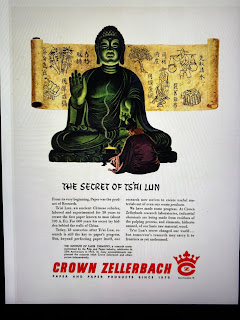The Northwest has a long history of forest products production, from timber and plywood to paper, providing many carloads of revenue for the railroads serving this region. Pulp and paper mills have always held a great fascination for me, particularly the large integrated mills which started with logs or raw wood chips and carried out every step of transforming the wood into finished products. I’ve been fortunate to spend a good part of my career selling equipment to these mills while learning their processes and history.
Some of the first pulp and paper mills in the Northwest were established in the late 1800’s and early 20th century. Many expanded and diversified over time to become very large manufacturing enterprises. What many do not realize is that the pulp and paper manufacturing process requires a great deal of chemistry, as well as producing some useful chemical byproducts.
While the first paper making process was mechanical, chemical pulping followed, producing a wider range of more useful and attractive paper products. There are several basic processes to break down wood fiber into pulp that can be used to make paper of many types. These processes can require caustic, acids, lime, bleaching agents, mineral slurries and other specialized chemicals. Additional chemicals are used to provide specific properties for finished paper products, such as brightening agents, rosin and starch for sizing, mineral slurries like clay for smoothness, even copper sulfate as a fungicidal additive (for fruit wrap), among others.
The Kraft, or sulfate process, is the dominant method used (https://en.wikipedia.org/wiki/Kraft_process), with the sulfite process (https://en.wikipedia.org/wiki/Sulfite_process) and it’s variations not uncommon in the heyday of paper production. Here is a good basic article on papermaking chemistry: https://www.chemistryworld.com/features/the-complex-chemistry-of-making-paper/4017234.article. Other specialized methods combine temperature and pressure with chemicals or mechanical processing. It’s not my intent to provide a treatise on papermaking, but to illustrate the range of chemicals consumed, and transported by rail, in this industry.
At various times, liquid byproducts from pulping were commercially attractive to market as well. These included tall oil, wood alcohol, turpentine and lignin compounds. Another was vanillin, artificial vanilla, produced from lignin, refined and sold for flavoring.
All, or most, of these chemicals require tank cars, or sometimes box cars with bags or drums, for inbound and outbound loads.
The photo in the advertisement above shows an overview of the Puget Sound Pulp and Paper mill in Bellingham, Washington. A string of tank cars and the curved chemical area railroad tracks are visible in the mid foreground of the picture. This mill is a primary inspiration for my layout modeling efforts. During World War II it produced wood alcohol along with other chemicals, and owned a small second hand fleet of private label tank cars, apparently until the mill was sold to Georgia Pacific in 1963. My research on these cars continues, with the goal of modeling them.
The mill received tank cars of chlorine for bleaching, sodium hydroxide and sulfuric acid for the pulping process, along with other papermaking chemicals. All of this provides opportunities to model a range of tank cars suited for these commodities. I will expand on this in subsequent posts and as my research progresses.





















